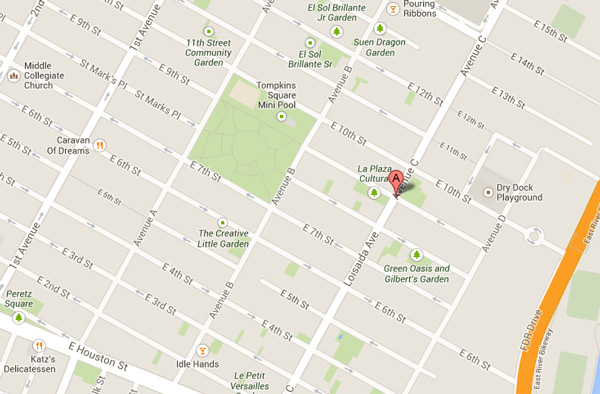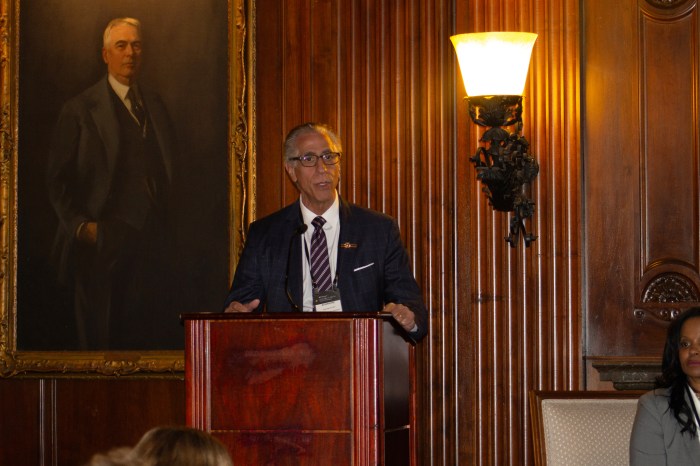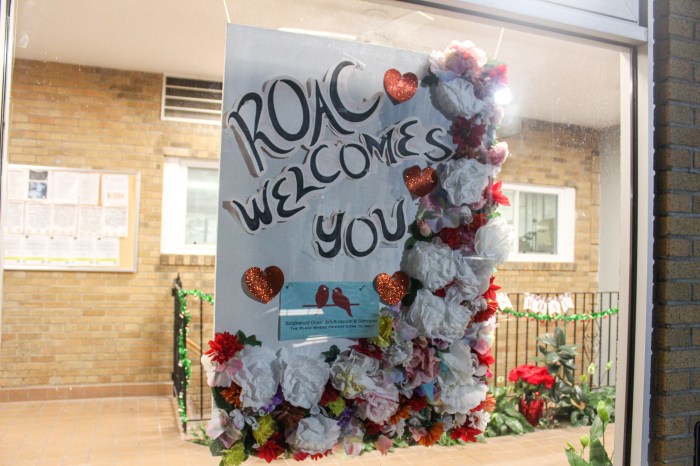BY LESLEY SUSSMAN | Community Board 3 is working to help rid the East Village of rats — or, maybe more realistically speaking, at least sharply reduce their numbers.
Susan Stetzer, the board’s district manager, announced at the Sept. 23 full-board meeting, that C.B. 3 will be participating in a Department of Health-sponsored pilot project to help deal with the neighborhood’s rampant rodent problem.
“This will be a very intensive intervention, in which every single private and city-owned property in the pilot project area will be inspected for rat infestations,” she explained.
The pilot-project area is bounded by the east side of Avenue A and the west side of Avenues B and C from E. Seventh St. down to Houston St., plus the area between Houston and First Sts. from Avenue A to Second Ave.
Stetzer added, however, that there would be “no fines or enforcement attached to this pilot project.”
A D.O.H. spokesperson said the agency “will target ideal rat environments” that promote large numbers of the critters and allow for fast reproduction, as well as rats that have been “resistant to previous pest-control efforts.”
The process will include additional inspections of city-owned property by block-level surveys; treatment of the city-owned property by D.O.H. staff; and case management, in which D.O.H. will provide walkthroughs, thoroughly inspect, and work with owners and residents on any possible rat problems around shelters, vacant lots and the like.
The initiative will have three case managers. They will be making appointments with property owners and residents, trying to get access to rear yards, arranging for meetings with block associations, businesses, restaurants, community gardeners and other stakeholders.
For each impacted area, the agency will offer free training to affected groups, such as businesses and community garden organizations.
On another matter, C.B. 3 also approved a resolution calling for all streets in its district to have curb cuts that will enable residents who use wheelchairs, walkers and other mobility aids, plus people with vision impairments, to more easily maneuver along the sidewalks.
The board’s resolution said that, currently, many of the area’s sidewalks are “too dangerous for use by persons with disabilities.”
In addition, the board decided to delay a vote on a resolution in support of adding tolls on East River bridge crossings, under which the revenue would go toward transportation infrastructure improvements.
A number of board members said more information was needed about the potential impact such increased tolls would have on small businesses in areas like Chinatown, and how adding tolls would affect businesses and quality of life in communities located near the Williamsburg, Manhattan and Brooklyn bridges, on both sides of the river.


















